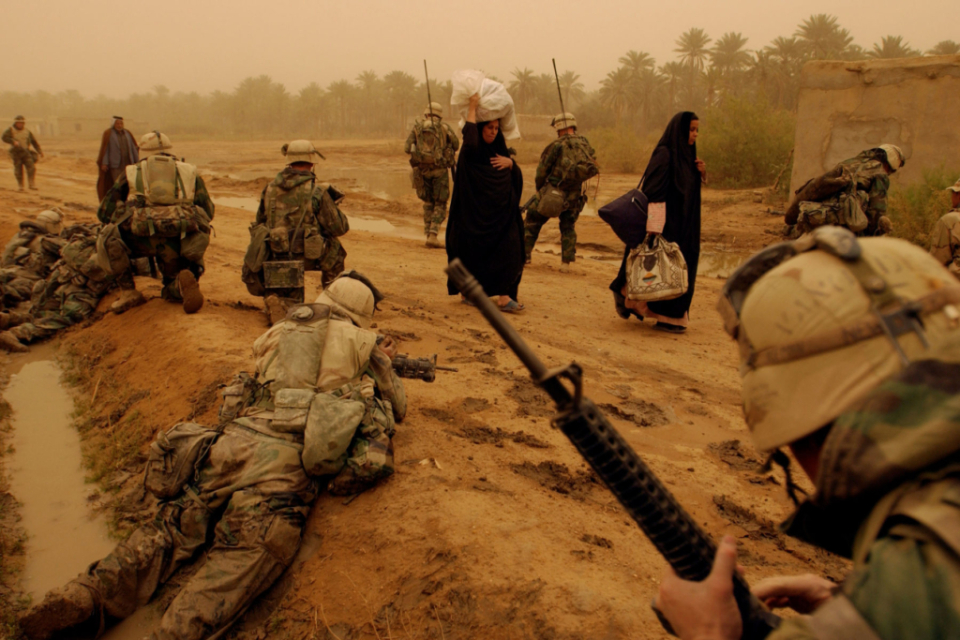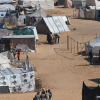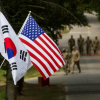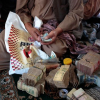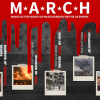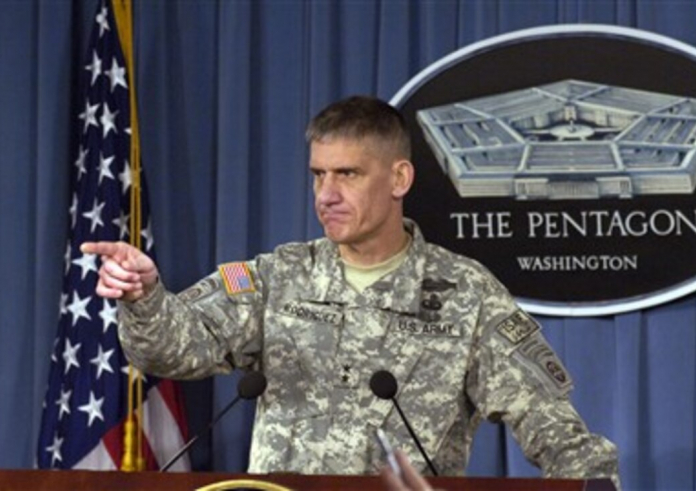
When the United States invaded Iraq 20 years ago, Ghaith Abdul-Ahad was eking out a living in Baghdad as a young architect. Born there in 1975, he later dodged being drafted into the Iraqi army. Soon after American soldiers entered Baghdad in early April 2003, Abdul-Ahad fell into journalism, working first as a translator for a Guardian reporter and then as a fixer for other foreign correspondents. Before long, he was filing his own stories and establishing himself as one of the best journalists in Iraq, distinguished by his ability to cover the war through Iraqi eyes. Since then, Abdul-Ahad has reported from across the Middle East for The Guardian and many other media outlets, winning the Orwell Prize for his journalism, among other awards.
His new book, A Stranger In Your Own City: Travels in the Middle East's Long War, was just published on the eve of the 20-year anniversary of the invasion of Iraq. In a crowded genre of books and memoirs about the war by American reporters and soldiers, there is now a definitive account by an Iraqi journalist who tells the longer story of the invasion and occupation, starting with the devastating sanctions on Iraq in the 1990s and continuing through the rise of the so-called Islamic State. "A nation can't be bombed, humiliated and sanctioned, then bombed again, and then told to become a democracy," Abdul-Ahad writes. In the following excerpt, he details the early days of the U.S. occupation from the streets of Baghdad and what led to the immediate "failure of the American adventure in Iraq."
—Frederick Deknatel, Executive Editor
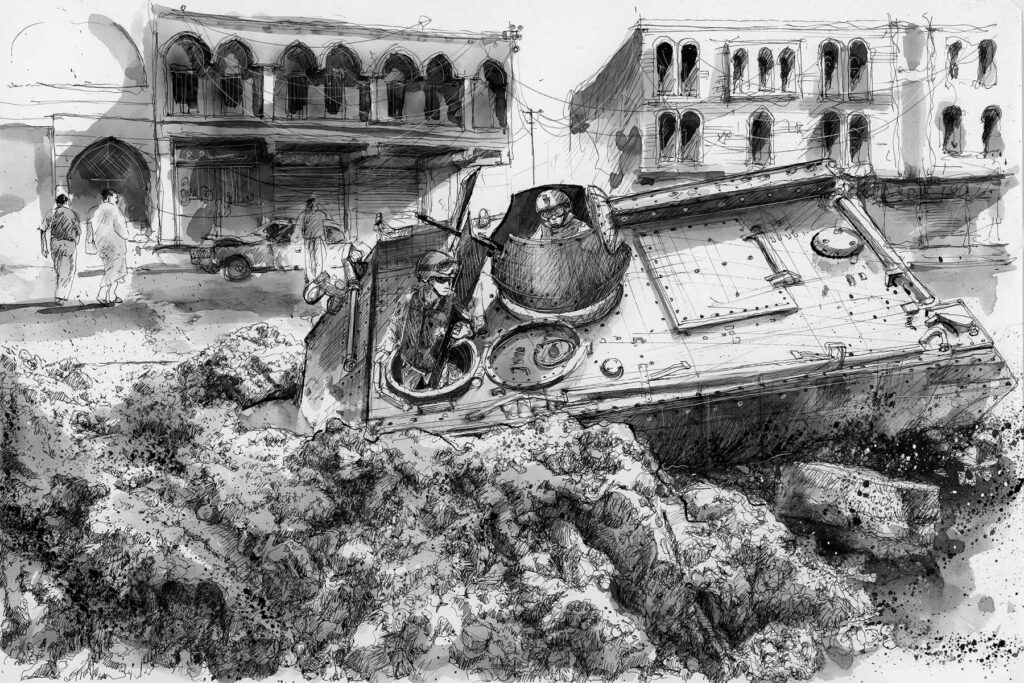
Iraq, destroyed and occupied, hung between a state and no state. The initial guarded optimism of the Iraqis—who were promised liberation, prosperity and freedom with the removal of Saddam—shattered with the first car bomb. It became evident that the long-awaited peace was not coming—and that the occupation had unleashed something much worse.
Iraqis said, how can the Americans fail? Look at their tanks and weapons, America is the greatest nation. No, Americans never fail. It must all be a plot, a conspiracy, they assured each other. Just as they stood in disbelief in front of the burned-out National Library and said, no, we Iraqis can't have done that, it must be the Kuwaitis acting in revenge for what we did in 1991, so they stood in front of the carcasses of car bombs and swore by the Almighty that they had seen American helicopters firing rockets. They were in denial that the country they knew was gone.
When the violence began, it was sporadic and random. A hand grenade tossed at a passing American Humvee, a home-made land mine on an arterial route, or an RPG targeting a supply convoy. The spokespeople in the Green Zone dismissed these incidents as "desperate acts of former regime elements" (the FRE in the acronymic lingua of the occupation authority)—even when Humvees were set alight in downtown Baghdad, and IEDs ripped through tanks and armored vehicles, even as bands of young men fired mortars at American positions in eastern Baghdad.
The Americans responded violently to these attacks, often shooting at nearby civilians indiscriminately, setting up checkpoints and raiding towns and villages searching for weapons and insurgents, alienating more people and adding to the numbers of men taking up arms against them. The "liberation" was looking like a real occupation.
The violence that targeted the Iraqis, however, was planned and organized. In Baghdad, the Badr brigade, one of the Shia militias formed in Iran, instigated a campaign of assassinations a few weeks after the occupation, targeting the former military pilots who had fought against their Iranian masters in the Eighties war, as well as former military scientists and Baath Party officials. As a result, men in several middle-class neighborhoods in west Baghdad, where many of the former army officers lived, armed themselves with machine guns and stood guard at the entrance of their streets to protect their areas.
Iraq, destroyed and occupied, hung between a state and no state. The initial guarded optimism of the Iraqis—who were promised liberation, prosperity and freedom with the removal of Saddam—shattered with the first car bomb.
- GHAITH ABDUL-AHAD
Another layer of violence was the competition between different armed Shia factions over power and resources, like the fighting between militiamen following Muqtada al-Sadr and those from the Badr brigade—the biggest of the exiled Shia militias—over the control of the shrines in the holy city of Karbala and their lucrative income. It was the first time I reported on street fighting. I saw a group of impoverished young men in a deserted market, one of them guiding a deaf and mute man carrying an RPG launcher on his shoulder. Bending down and holding the deaf man by the waist, he pushed him into the middle of the street and pointed in the direction of the firing. Whooosh went the rocket, and the deaf man turned with a big grin on his face, oblivious to the shooting around him.
My work as a translator and photographer began to change in nature. What started as interviewing Iraqis trying to come to terms with the change in their society gradually turned into war reporting and photography, dodging bullets, hiding behind street corners and taking pictures of young men firing at American tanks and Humvees, along with the occasional interview of a turbaned cleric issuing threats and ultimatums.
By early summer 2003, violence was taking a pattern, and a rebellion by both Sunnis and Shia fighters against the occupying forces had begun. Both attacked the Americans and the newly established Iraqi security forces, as well as civilians working with the new government.
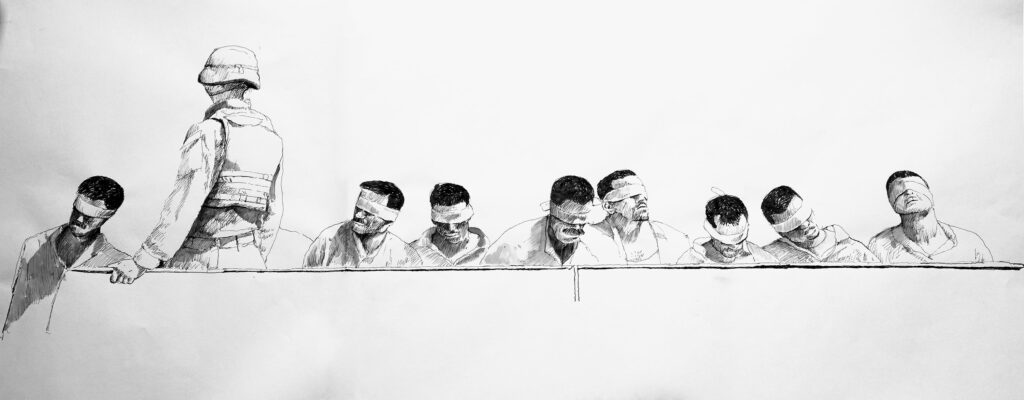
In villages, towns and the suburbs of Baghdad, cells were formed to resist the Americans. Some fought out of nationalism, others a sense of injustice, still more for tribe or religion. Hundreds of cells with hundreds of motives. At first, the men coalesced around the traditional trusted networks of tribe, family and neighborhood. (For when one evolves into a resistance fighter who does one trust? Who does one buy weapons from? And who does one send as a message courier? The answer is the same: cousins and family and neighbors that form a support network.)
Over time, the cells merged and became "armies," "battalions" and "organizations" with a clandestine secretive structure under a quasi-military command. Their ideology was simple, jingoistic, nurtured in the isolationism of the tribe, mixed with Iraqi military chauvinism and the fluff of religious edicts about the righteous battle against invaders. The cells collectively called themselves the Resistance and probably for a fraction of a second in the first year of the occupation, they were resistance with all the connotations of that word, before they descended into banditry and sectarian mass killings. These bands of fighters could not defeat the Americans militarily; however, they ensured the failure of the American adventure in Iraq. Any community or institution that tried to defy them was attacked through intimidations, assassinations or mass killings. Religiosity, already prevalent in the society since the Faith Campaign in the Nineties, acquired a sectarian anti-Shia tone, and began to augment the tribe, family and neighborhood as the rallying cry for the "Resistance." It helped expand the networks of trusted fighters, organizing around mosques and galvanizing the grief, energy and anger of young men, and channeling it into the war.
These bands of fighters could not defeat the Americans militarily; however, they ensured the failure of the American adventure in Iraq.
- GHAITH ABDUL-AHAD
Ahmad joined the Resistance in its early days. He was living with his grandmother in the neighborhood of Seliekh in Baghdad, not far from my high school, when the Americans invaded. Stocky with wavy hair, a round kind face and the body of a wrestler, he had left his family home in Diala province and enrolled in high school in Baghdad, but rather than studying he was spending long hours in the local gym lifting weights. There he had heard of a young imam in the local mosque, who was taking advantage of the new religious freedoms brought with the occupation and preaching a hard form of defiant militant Islam, something effectively quashed by the previous regime. Ahmad also heard that the imam was organizing "a protection force" for the neighborhood, so he gathered a few of his gym friends and went to meet the charismatic imam. None of them was religious, but they were fired up by the imam's long sermons about their duty to defend their country against a foreign occupier and the threats to their community from the "Iranians"—a reference to the new Shia political parties.
Ahmad and some of his friends joined the Resistance and were given the task of planting small home-made land mines in the street. He didn't tell his family back in the village in Diala about any of this, but the new life as a mujahid was very exciting. He would stay awake all night and sleep during the day; he stopped going to his high school, which he had never really liked. They collected money to buy weapons, which were available cheaply in the markets after the looting of army depots.
Source: Dawn

